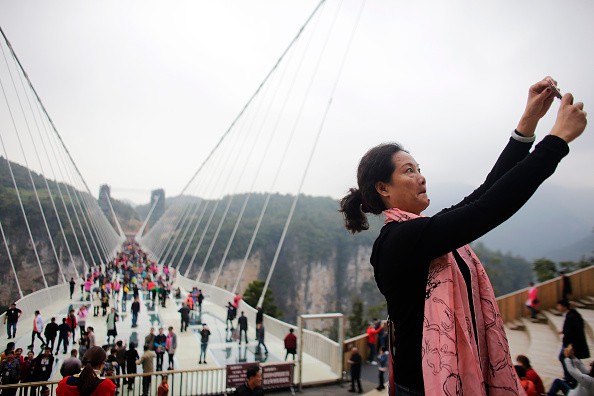China built a new walkway and observation deck with a narrow glass bridge that leads to a circular platform 450 meters above a rocky gorge on Mount Langya. It opened in the northern province of Hebei.
The glass bridge affords a 360-degree view of a national forest that is being conserved.
The circular platform can only be reached after a 3-hour trek or cable car ride coupled with a 40-minute hike.
A cave halfway up is filled with stalactites, stalagmites and dripping rock formations.
The Chinese can't seem to get enough of glass bridges. In December, plans were revealed to construct an "invisible" bridge in Zhangjiajie, a world heritage site, where mirrored stainless steel and black stone that becomes reflective when wet will be used.
In September last year, the 430-meter-long glass-bottomed bridge suspended 300 meters over the Zhangjiajie National Park--the longest and highest in the world--was forced to close after visitors numbering ten times than its capacity overwhelmed the bridge. The bridge could only hold 8,000 visitors per day.
To prove that the glass bridge was safe, the bridge makers invited a journalist to smash it with a sledgehammer. BBC's Dan Simmons executed the safety test by hitting a section of glass several times. The top layer cracked but the pane remained stable.
In 2015, Chinese tourists were left terrified after a glass pane on the walkway of a U-shaped skywalk in the Yuntai Mountain was shattered after someone dropped a stainless steel mug on the platform. The walkway was then closed for repairs. The walkway is suspended more than 1,000 meters above sea level.
A spokesman for the Yuntai Mountain Scenic Spot claimed the tourists were never in danger since only one of the three layers of glass has cracked.
Another glass walkway in China that opened in 2015 was built on the edge of the 76th floor of the Yunding Building in Liuzhou, Guangxi, which is 994 feet above the ground.



























